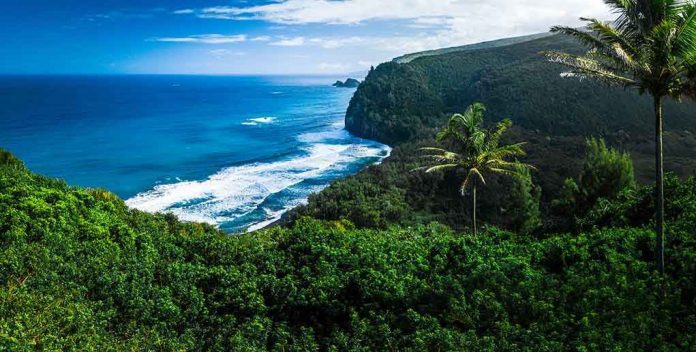
American heroes from the California Air National Guard just proved why elite military rescue capabilities remain essential for protecting lives in remote waters where no other force can reach.
Story Highlights
- Guardian Angel pararescue team parachuted 700 nautical miles offshore to save Filipino mariner experiencing stroke symptoms
- Mission showcased America’s unmatched long-range rescue capabilities beyond Coast Guard reach
- Operation marked first life saved with new HH-60W Jolly Green II helicopter
- Successful two-day mission demonstrates vital role of military readiness in civilian emergencies
Elite Warriors Answer Ocean Emergency Call
On September 18, 2025, four Guardian Angel pararescuemen from California’s 129th Rescue Wing executed a precision parachute jump into Pacific waters to reach a medical emergency aboard the Panamanian-flagged cargo vessel Grand Vega. The Filipino mariner suffering stroke-like symptoms was located 700 nautical miles offshore, far beyond conventional rescue capabilities. This distance placed the emergency in a zone where only America’s elite military rescue assets could respond effectively.
The mission began when U.S. Coast Guard District 11 received the distress call and immediately coordinated with the Air Force Rescue Coordination Center. Understanding the extreme range involved, officials tasked the 129th Rescue Wing due to their specialized long-range maritime rescue capabilities. An HC-130J Combat King II aircraft launched with five Guardian Angel team members, carrying advanced medical equipment and a boat package for ocean insertion.
Precision Execution in Hostile Environment
The pararescue team’s ocean insertion required exceptional skill and planning, as Pacific conditions 700 miles from shore present significant hazards including unpredictable weather and sea states. Four pararescuemen successfully parachuted with their boat package, reached the Grand Vega, and immediately began medical stabilization of the patient. Their training in advanced medical procedures, combined with their ability to operate in extreme maritime environments, proved crucial for the mariner’s survival.
Major Coda Brown from the 129th Operations Group emphasized the mission’s complexity, noting the “disciplined planning, swift insertion and expert patient care at an extreme distance.” This operation exemplified the unique capabilities that distinguish American military rescue forces from civilian counterparts, particularly their ability to project life-saving power across vast oceanic distances where traditional emergency services cannot operate.
Historic Milestone in Military Aviation
September 19 marked a significant transition for the 129th Rescue Wing as follow-on recovery helicopters launched to extract the stabilized patient. The mission represented the unit’s first life saved using the new HH-60W Jolly Green II helicopter, while potentially marking the last rescue with the legacy HH-60G platform. This equipment transition demonstrates America’s ongoing investment in maintaining superior rescue capabilities for both military and humanitarian missions.
The patient was successfully hoisted from the vessel and transported to Stanford Hospital for advanced medical care. All rescue personnel returned safely, completing a complex operation that showcased the strategic value of maintaining elite military rescue assets. Such missions underscore why robust defense spending and military readiness serve broader humanitarian purposes beyond traditional national security roles.
Sources:
New York Air Guard pararescue team wrapping up mid-Atlantic rescue
California Air Guard’s 129th Rescue Wing Stabilizes Mariner 700 Nautical Miles Offshore
United States Air Force Pararescue
129th Rescue Wing Official Site





